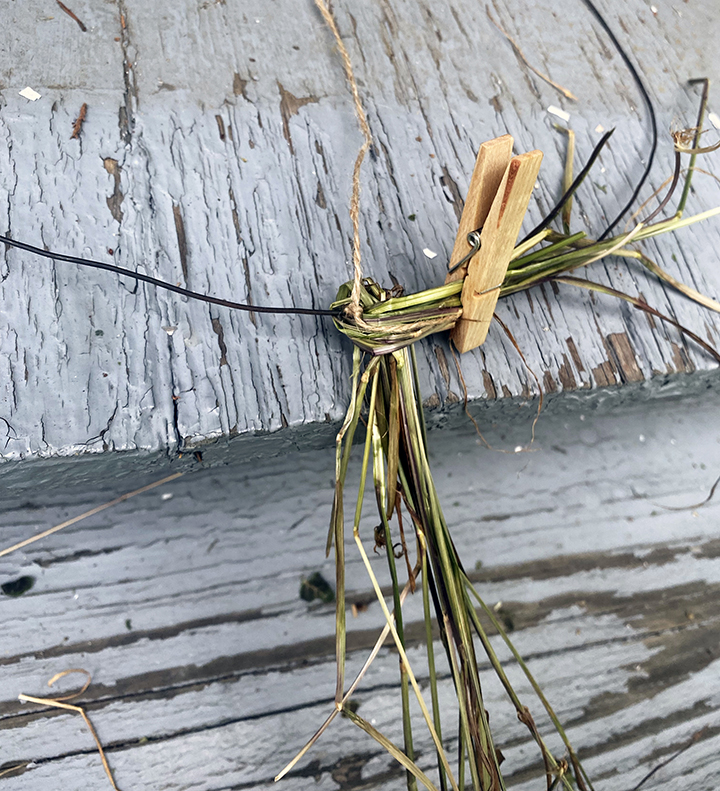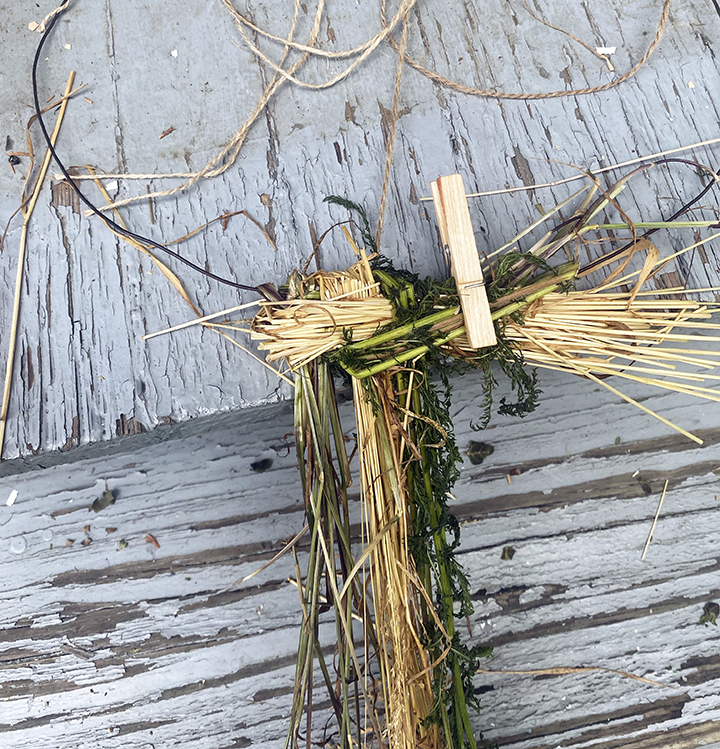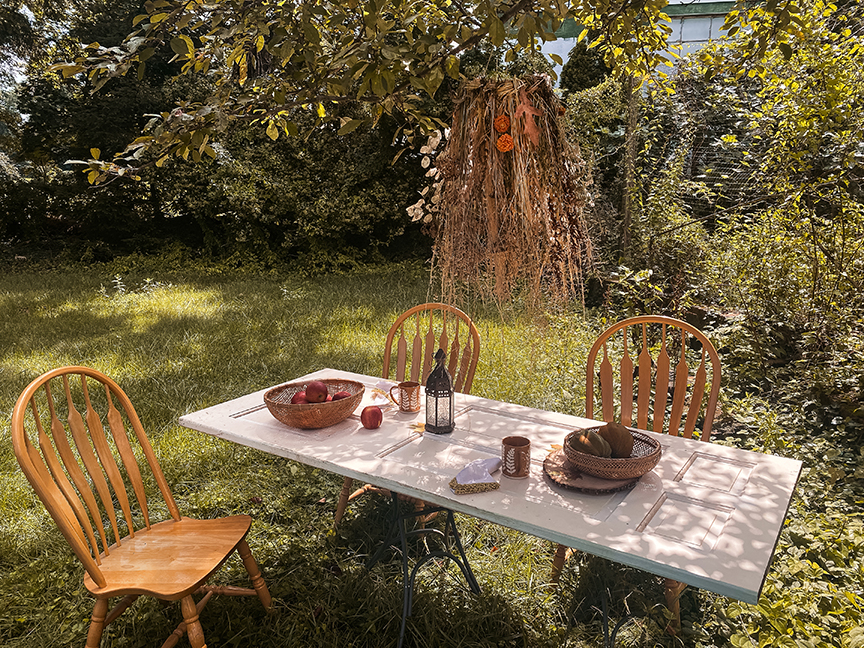
The Fall or Autumnal Equinox is the midpoint between the Summer and Winter Solstices. Day and night are of equal length in nearly all parts of the world. The Equinox is the astronomical first day of fall, traditionally starting the fall season. Darkness and night increase, we move within our homes and ourselves and begin to prepare for the coming winter. This is the time of year when farmers would historically know how well their summer crops did, and whether they would have enough food for the winter. It’s not a coincidence that so many disparate people and cultures celebrate the harvest around this time. Whether you observe the equinox, Thanksgiving or another fall celebration, giving thanks for the harvest is something we can all appreciate this time of year.
Grasses come into their own in the autumn, growing heavy with seeds and turning shades of gold. Wheat ripens, a beautiful array of seed pods in all shapes and sizes emerge, and leaves take on their fall color. Gathering these plants to decorate with shows off their hard work producing seed. A woven chandelier to hang over your feast table is a beautiful and easy way to showcase them.
Your harvest chandelier also serves as a kind of record of your harvest and your place in the world. As you collect grasses, weeds and grains from around your environs it will inherently be different than one made someplace else.
Weaving the chandelier is fairly simple—in fact, it’s basically the same stitch that children use to make flower crowns in the summer. You can use any plants that you’d like, so long as they have longer stems. Suggestions include decorative grasses, weedy grasses, goldenrod, sweet clover, wheat or other grains, dried ferns, dock, sorghum, and moonwort.
You’ll attach the plant material in bundles so that the finished product looks thick and abundant, as a good harvest should. It makes the perfect adornment for a fall harvest table and celebrates the bounty of autumn.

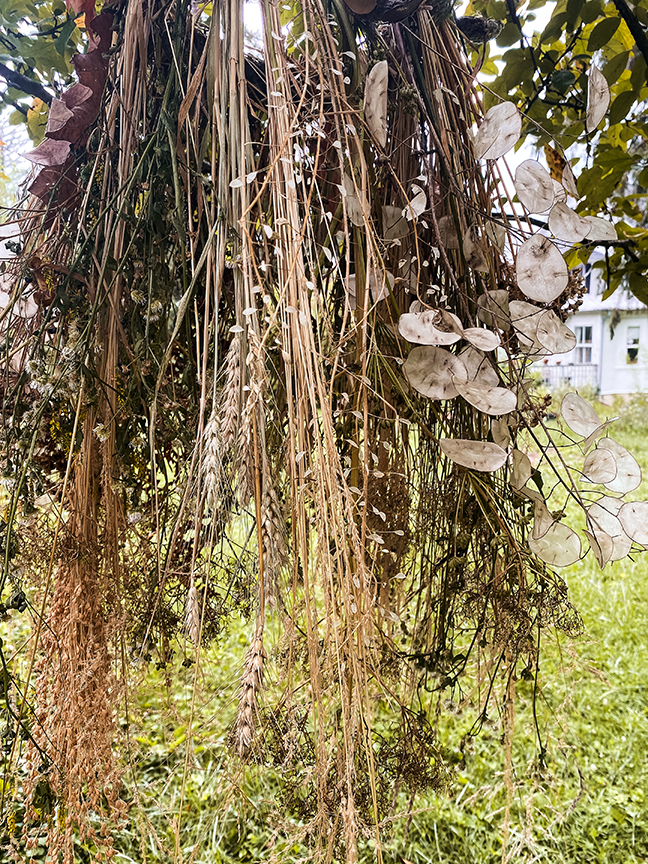
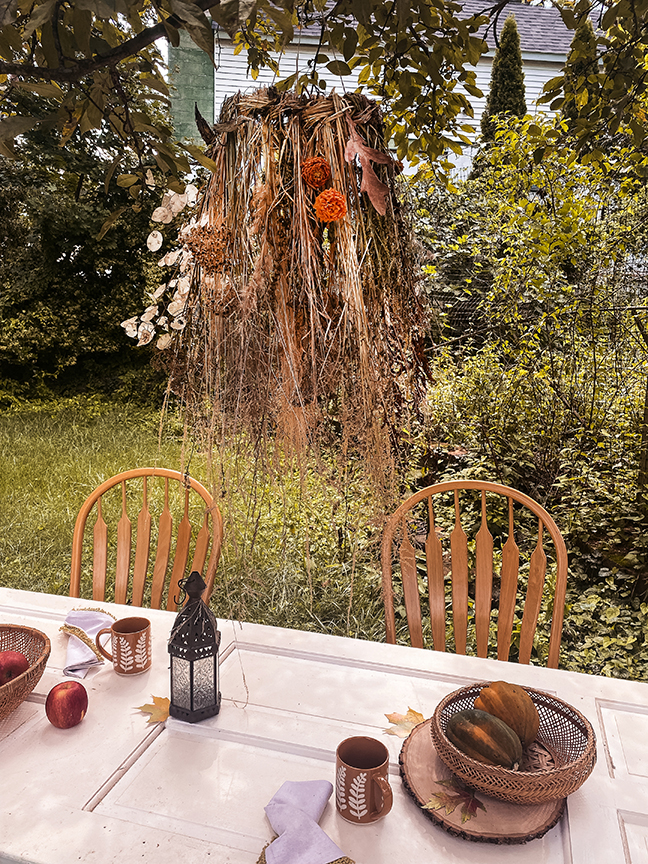
Materials:
- Grasses (like decorative grasses, weedy grasses, goldenrod, sweet clover (which smells amazing too) wheat or other grains, dried ferns, dock, sorghum, moonwort,
- Thick wire (like baling wire)
- Twine
- A clothespin (optional but useful)
- A shallow pan of water
- A box cutter (optional)
- A variety of smaller seed pods and decorations (dried dahlias, fall leaves, milkweed pods etc)
Method:
Bend your wire into a circle. This will be the diameter of your chandelier. Tie three pieces of twine onto the circle so that it hangs horizontally. Tie a loop at the top.
When you are ready to start adding your plant materials, lay everything out in small bundles to make it easier once you start working. Gather as much as you can, it always seems to look like more than it is. Fresh or green plant material can be woven onto the chandelier as is, anything that is dried out will need to be soaked for a few minutes in the pan of water. If you have any stems that are especially thick (like dock or sorghum), very carefully cut their stems in half with a knife so that the resulting piece will bend easily.
To begin weaving, place a clump of grass perpendicular to the wire. (The wire is then horizontal and the grass is vertical) The decorative part should be facing down. Bend the top of the grass bundle over the wire to the left, around the stems of the grass and then parallel to the wire again. Take your next bundle and repeat the process, place the second bundle to the right of the first one. Bend the top over the wire, then around the bundle to the left of it and back up to join the wire. Continue adding bundles this way, always looping them over the wire, around the stems of the bundle directly left of them and then back up to the wire. If you need to stop, use the clothespin to hold the tails in place.
Continue all the way around the wire circle until you’ve filled the whole chandelier in. Tuck the tails into the first loop you made and tie it with a little twine if it feels more secure.
Last, trim any ends that escaped and weave in any decorations you have. This is where you can add colorful leaves and things with shorter stems, just wedge them into the existing weaving.
Hang up your chandelier and enjoy!
